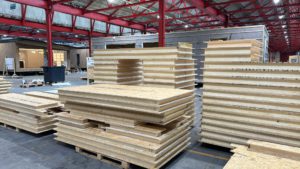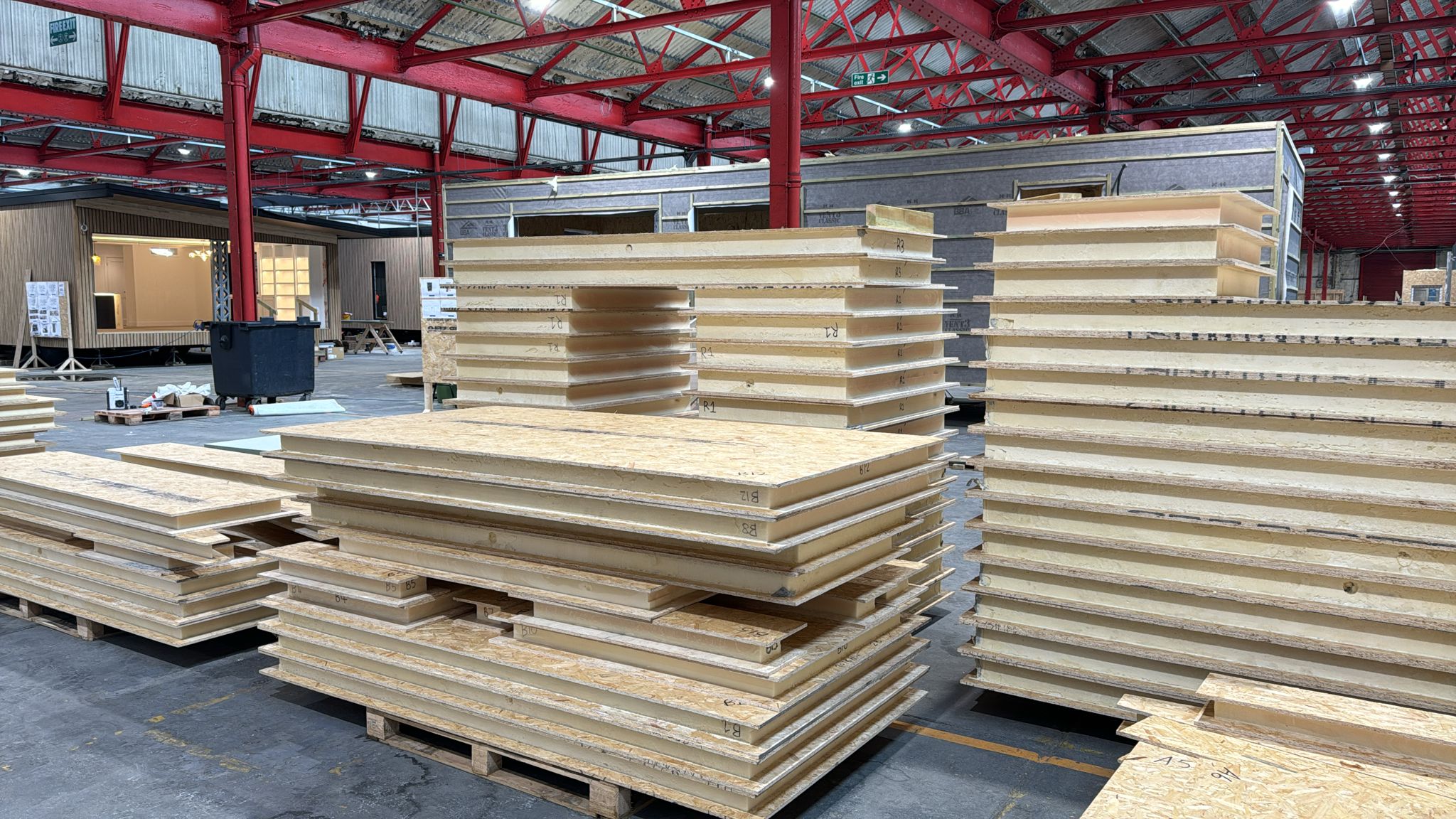Innovation and efficiency are the driving factors behind every new advancement in the field of contemporary building. Leading this transformation are Structural Insulated Panels (SIPs), which provide unparalleled strength, energy efficiency, and installation speed. However, what is involved in making these panels that are revolutionising the way we construct? From factory to foundation, the production of SIP panels tells a tale of smart design, sustainability, and precise engineering that is changing the face of building.
Sip Panels: What Are They?
SIP panel manufacturers are high-performance construction materials used in commercial, industrial, and residential buildings for floors, walls, and roofs. An insulating foam core is positioned between two structural facings, usually metal sheets or oriented strand board (OSB), in each panel. This combination results in a material that is both lightweight and very robust, improving energy efficiency and cutting down on building time.
Manufacturers have added cutting-edge materials, such as metal insulated panels, over time to further enhance thermal performance and durability. These metal-faced SIPs are perfect for regulated areas where exact temperature control is essential, such as cold storage facilities and industrial buildings.
Step 1: Selection Of Materials: The Basis For Quality
Superior materials are the foundation of every outstanding product. Choosing the appropriate core insulation—typically expanded polystyrene (EPS), polyurethane, or polyisocyanurate foam—is the first step in the production of SIP panels. Superior insulation and structural stability are offered by these materials.
Depending on the needs of the project, the exterior layers—whether OSB, steel, or aluminium—are carefully selected. For example, where greater fire resistance, moisture management, or impact protection are required, metal insulated panels are recommended. In a similar vein, controlled environment panels are made specifically for sectors where accurate temperature control is crucial, such as labs, food processing, and pharmaceuticals.
Step 2: The Core Of Innovation: Precision Manufacturing
Modern technology in the production guarantees that each SIP panel satisfies precise requirements. Panels are precisely trimmed by automated cutting equipment, and uniform layer bonding is guaranteed by adhesive application systems. To provide strong adhesion and little air escape, this technique needs precise alignment and temperature control.
A solid, monolithic panel is created when the core insulation is bonded between the two structural facings under pressure. Quality control is applied at every stage to guarantee that the finished product retains its structural soundness and insulating effectiveness.
To improve uniformity and save waste, SIP manufacturers make significant investments in automation and research. The outcome? Panels that are more ecologically friendly, in addition to being tougher and lighter.
Step 3: Ensuring Reliability With Quality Control And Testing
SIP panels go through extensive testing to guarantee performance and adherence to industry standards before they are sent from the manufacturer. This covers fire safety studies, load-bearing tests, and thermal resistance analyses.
Additional testing is performed to confirm air tightness and moisture control capabilities for specialised applications, such as controlled environment panels. This guarantees that the panels maintain consistent internal conditions, which is essential for labs, cleanrooms, and cold rooms.
Manufacturers ensure that every SIP panel supplied to a project site satisfies the highest performance criteria by upholding stringent quality control procedures.
Step 4: The Installation Phase: From Factory To Foundation
SIP panels are prepared for quick installation once they are delivered to the building site. Compared to conventional construction techniques, installation is quicker and more effective since they are prefabricated to precise specifications. Builders just need to use splines to link the panels, tape or expanding foam to seal joints, and fasten them in position.
Construction timetables, labour expenses, and trash on-site are all greatly decreased by this efficient procedure. Combining SIP panels with metal insulated panels for large-scale projects, such as warehouses or refrigerated facilities, guarantees both structural strength and thermal efficiency—perfect for settings requiring precise temperature control.
The Prospects For SIP Panel Production
The production of SIP panels will become even more important in creating the buildings of the future as energy efficiency and sustainability continue to influence the construction sector. Panels are becoming lighter, stronger, and more environmentally friendly because of automated manufacturing lines, eco-friendly adhesives, and advanced materials.
The use of controlled environment panels in niche industries like food preservation, logistics, and biotechnology demonstrates how adaptable SIP technology has become. These panels are demonstrating that strength and style can coexist with energy-efficient design in both residential and commercial buildings.
Conclusion
The production process of SIP panels is a perfect example of accuracy, creativity, and sustainability from factory to foundation. Every panel represents an advancement in more intelligent, quicker, and environmentally friendly construction, whether it be metal insulated panels made for longevity or controlled environment panels made for performance. One layer at a time, SIP panels will continue to revolutionise construction as the need for energy-efficient solutions increases.







